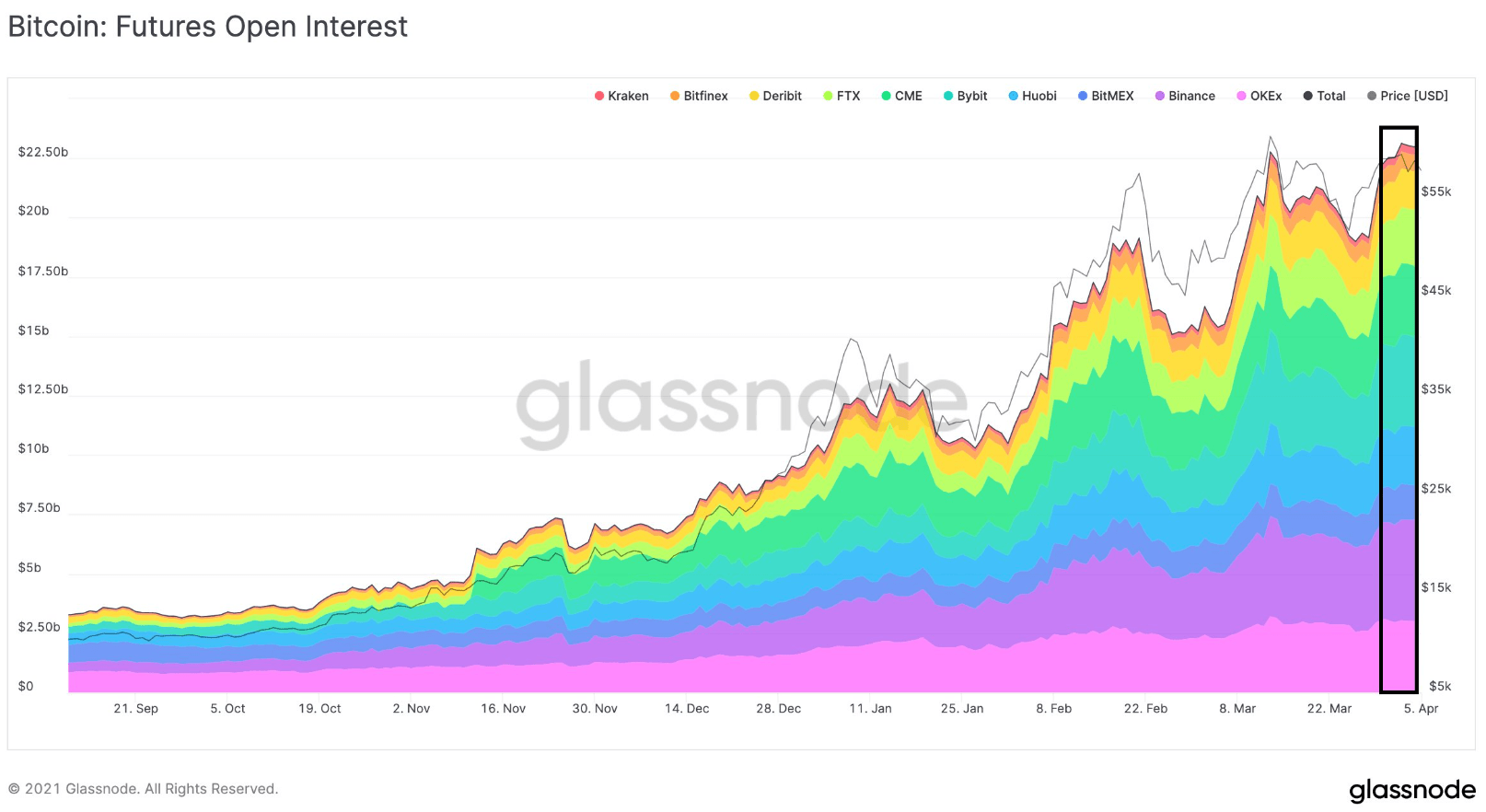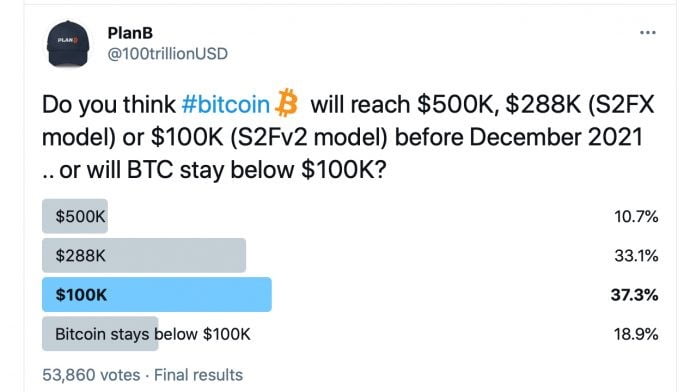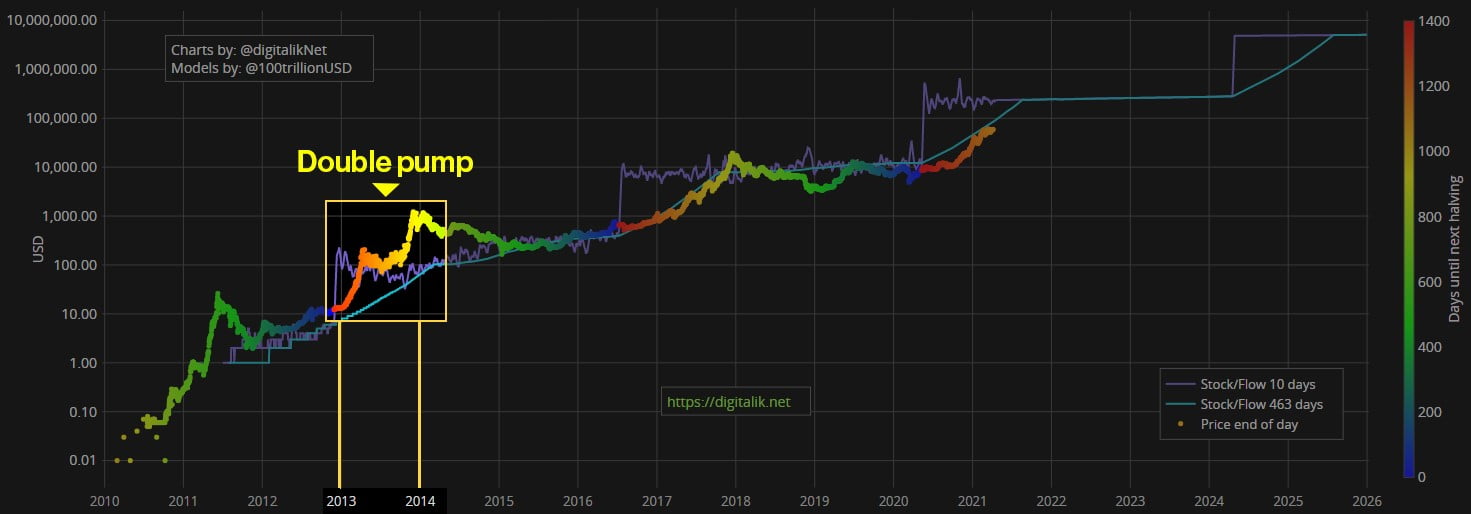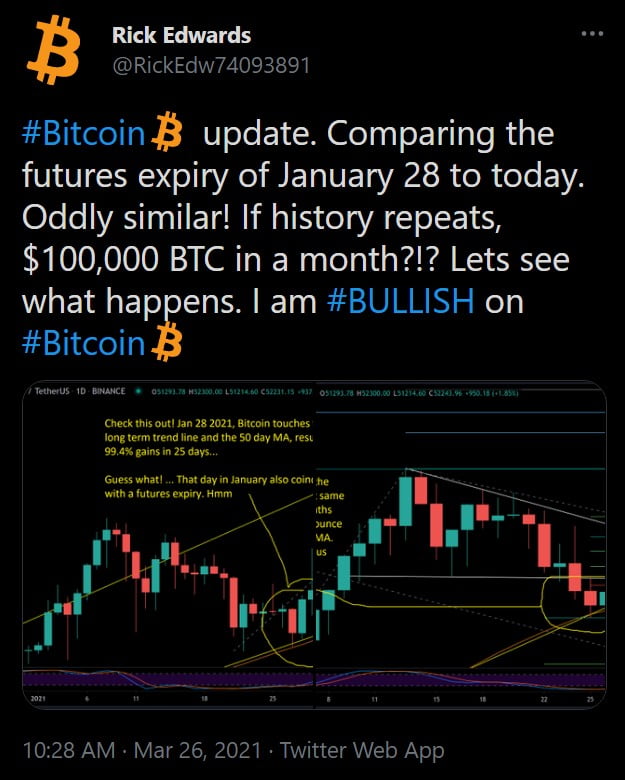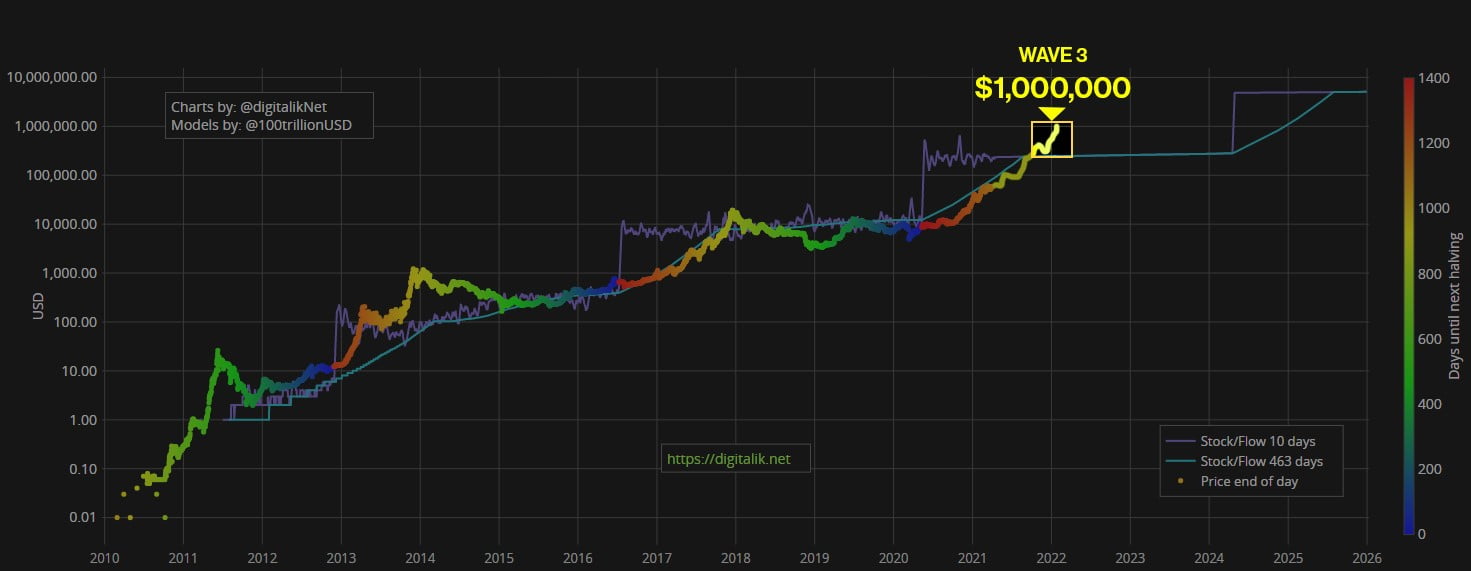From sovereign wealth funds jumping in, to multiple Bitcoin ETFs in the works, there is a growing sense something important is going on and that perhaps mainstream adoption is just around the corner. Q1 2021 hedge fund letters, conferences and more There is so much to focus on out there but you only need to […]
11 min read
This story originally appeared on ValueWalk
From sovereign wealth funds jumping in, to multiple Bitcoin ETFs in the works, there is a growing sense something important is going on and that perhaps mainstream adoption is just around the corner.
Q1 2021 hedge fund letters, conferences and more
There is so much to focus on out there but you only need to look at a couple of key market data points to see that bets are being placed on a big fundamental global shift to crypto.
From sky high open-interest in the derivative markets and positive perpetual swap funding rates. Both showing strong long conviction and pent up demand which is imminently likely going to continue pushing prices higher.
Pent up demand signal through higher and higher future open interest rates on all major crypto derivatives platforms.
There is also undeniable on chain evidence that massive quantities of BTC are migrating away from exchanges into deep freeze, likely never to hit the open market again. This will likely lead to a real supply shortage, hence why professional traders in the futures markets are feverishly long right now.
A growing cohort of traders are looking at the historical charts and comparing the double pump that happened in 2013 as a scenario or something like it could play out again.
2013 saw prices jump from $10 to $260 only to drop -70% like a stone. It then suddenly recovered to $1,000.
Chalk it up to love for round numbers, and/or the human inability to quantify large numbers but the double pump was significant because most people sold, believing it was the apex of bitcoin.
And for many they weren’t wrong, BTC did go back down again -80%, but the take away from the double pump cycle was that it made people speculate that even higher prices just might be sustainable.
Today, speculation on the street is that something very similar is happening now in 2021, a persistent price continuation cycle where each retracement at key psychologically ‘large’ round prices will be quickly sold, only to be bought up again, with the help of institutional investors this time.
This narrative does have merit and proof from big names like Goldmen and Blackrock are clearly signaling everyones worth their salt in finance is going to have to have a crypto strategy now. AKA BTC strategy.
Quenching this insatiable appetite for bitcoin will prove challenging, as this time the new supply as well as circulating supply is extremely limited ever since the last Bitcoin halving event in mid 2020.
For many, the last halving was the first time they ever heard of such a thing. That there was a strict rule of supply and so many begun building scenarios and models based on this fact.
If we strictly follow supply and demand models such as the stock-to-flow model which is a system that takes into account BTC in circulations vs new BTC yet to be circulated (flow) then prices of $500,000 per bitcoin are not unreasonable, this article makes the case for that price in wave 2 part of this article.
The stock-to-flow model first started making the rounds 2 year ago, made famous by anonymous dutchmen.
PlanB gathering over 50,000 votes on the likely scenarios for 2021 on twitter.
The model matters because it shows that there isn’t enough newly minted BTC coming online to fulfill global demand and so this demand will inevitably have to be reflected in cycles of higher and higher prices.
But this begs the question, where are we in the cycle?
There is strong evidence to suggest that we are indeed experiencing something similar to 2013 but since history does not repeat exactly we should expect some surprises.
Above illustrates, in yellow the last continuous bull market pattern scenario where the chart looks almost like there was no bear market due to rapid recovery in prices.
The hypothesis for 2021 is that bitcoin will continue to be bought up rapidly and will form a triple top. It will come in 3 waves with different macro market dynamics.
What will influence this and what is the anatomy of this mega triple wave? Read on for the in depth analysis.
Wave 1: Front runners (early 2021)
Wave 1 the ‘front runners’ are those comfortable buying at these seemingly ‘high’ prices and will consist of crypto savvy individuals and institutions that have done their homework and paperwork to put bitcoin on the balance sheet.
Tesla, Microstrategy and many other smaller more nimble companies are leading the charge in this first wave but besides the big brand names moving in, there have been clear patterns in the options and future markets that have been showing strong sell offs on key expiration dates, followed by repositioning for the long term as illustrated in the chart below.
Vertical blue lines mark the key expiration dates for BTC options and future. Currently prices are in the middle of a new repositioning which should push prices towards new all time highs.
As March contracts have just expired recently and if history repeats then only a 60% rise to $100,000 is not an unreasonable scenario to predict as illustrated above with derivative market data and below with stock-to-flow data which shows just how well prices are on track.
And guess what? Many are seeing the same thing, as Rick Edwards said on Twitter: “#Bitcoin update. Comparing the futures expiry of January 28 to today. Oddly similar! If history repeats, $100,000 BTC in a month?!? Lets see what happens. I am #BULLISH on #Bitcoin https://t.co/Ua0s5mjv0Q.”
If and when $100,000 hits it will shatter the psychological barriers and begin an education process globally on digital scarcity.
$100,000 is a figure normally reserved for real-estate and so this 6 figure price will force people to recalibrate their thinking and begin to accept that Bitcoins scarcity is absolute, priming them for the next wave.
Wave 2: When institutions? (end 2021)
In wave 2 financial infrastructure will have to upgrade to be crypto compatible with blockchain based crypto assets.
This could simply be, one day, a Bitcoin balance appearing on your bank account or it could mean more of what we see today with well known fintech services like PayPal doing that all first before the banks figure it out.
Many of these institutions will just hold crypto stablecoins which will make buying Bitcoin even easier, which should translate to higher prices.
Visa has recently taken the lead in this respect, and it is highly likely this will become a high priority mandate for all financial services, if they want to stay relevant.
By the end of 2021, there should also be a US based Bitcoin ETF. The reason why an ETF is more than likely to happen sooner, rather than later, is due to the pending pressure from the likes of Fidelity who have now submitted their own ETF proposal, and from outside pressures over the border in Canada.
But the most pressing reason why an ETF will be approved is due to the almost complete monopoly the Grayscale trust has over the years with GBTC.
GBTC has for the most part, been one of the only ways for institutions to gain exposure to crypto assets and because of this GBTC would produce extreme price premiums of over 20-40% historically.
Premiums in GBTC have recently reduced but these huge price discrepancies were the regulators main complainants and reasons for not approving a BTC ETF.
Regulators themselves have managed to manifest the biggest price dislocations of Bitcoin in one big ironic twist through GBTC premiums and so it is likely the SEC will have no choice but to approve a Bitcoin ETF, if only to save face.
There is strong evidence to suggest that much of the paperwork required to invest in Bitcoin, let alone a Bitcoin ETF by institutions will be done in the second half of the year which coincides with the big outsourcing of the Bitcoin institutional playbook by Michael Saylor last December in 2020.
This means if and when a US based BTC ETF is approved there will be insatiable demand for the product from institutions trying to make up for lost time.
GBTC is also more than likely going to be one of many ETF after announcing that they will convert all GBTC customers into an ETF product once the regulators have given the green light.
Regardless, the crypto infrastructure is in place, and in wave 2, through large demand alone, it isn’t impossible to see prices of upwards of $500,000 which aligns almost perfectly with the stock-to-flow model illustrated in yellow below.
Note, prices tend to overshoot the stock-to-flow model due to viral market news and hype, above chart takes into account the chance for overheated conditions.
Wave 3: Real-estate, hyper-inflation migration is hyper-bitconization (2022)
In wave 3, a flurry of excitement and mass realization that BTC as a reliable strong hold of wealth will lead to a mass migration from real-estate, the most common way to hold wealth into BTC as a better more liquid asset.
This scenario makes sense because as real-estate becomes ever more over-priced, and as a largely unproductive, immobile asset then more portable assets such as BTC will naturally fill the void that has been missing.
If bitcoin becomes an alternative to real-estate then it is not hard to predict that it will also affect the lending and borrowing markets that are based on real-estate. Naturally banks or other financial institutions will have to begin to recognize bitcoin as a reliable collateral to issue loans against which should mark the beginning of hyper-bitconization.
If and when bitcoin becomes easy to borrow against, it should be priced accordingly at $1 million dollars per unit. For perspective, the price of an average small piece of real-estate today in many countries today is roughly $1 million.
If we measure from the first wave $100,000, to the third wave $1,000,000 which is equal to a 900% increase and taking into account the historical moves in 2013 which was a 7,592% price increase and in 2017 a price increase of 2,757%, than 900% begins to look tame on a relative bases and is highly realistic over longer time frames.
Another major macro detail in play is the chance of hyper-inflation. We are already seeing today all commodities are on the rise from cattle to steel. Bitcoin too has natural commodity like features but is digital, which justifies higher prices in an inflationary environment because digital attributes tend to lead to greater network virality.
It isn’t just Bitcoin going up, it is an everything going up situation. Source: Twitter
If prices of upwards of a million are ever reached then it will trigger hyper-bitconization which is a global process where BTC is accepted as a reliable means of storing generational wealth and can be used as a means of exchange for larger settlement transactions. Bitcoin should also be recognized as a means to borrow money which will naturally lead to higher and higher prices.
History doesn’t repeat but rhymes
Like back in 2013 there is a strong case history might surprise us with something bigger like a triple wave. But what do all 3 waves have in common? They all point to seismic infrastructural shifts that will affect industries beyond finance, from real-estate to technology and recently the energy sector.
This will reasonably lead to breakthroughs in open-source financial technology going mainstream which DeFi is evidence of.
Cryptocurrency exchanges will play an important role and some of them can arguably be the next global banking systems, essentially crypto banks.
If prices ever reach a million dollar per bitcoin it will then have overtaken the gold bullion market which is roughly $10 trillion market cap.
BTC at $1 million dollars per coin will mean a market cap of $18 trillion dollars which makes sense if you consider BTC as a technological leap in advancement vs gold and seems to be a narrative many are grappling with today with the likes of Ray Dalio who still prefers gold and thinks that BTC will be outlawed. But this is unlikely because BTC has arguably reached escape velocity years ago and is much more difficult to confiscate when compared to gold.
There is growing evidence to suggest that for those that prefer gold and real-estate they might not be on the right side of history and if history likes to rhyme then having a little BTC to stay tune is probably not such a bad idea.
Author bio:
 Adrian Pollard is the co-founder of bitHolla, a white label crypto exchange software provider based in Seoul, South Korea. Adrian’s history in crypto spans back as far as 2013 and has been working actively in the crypto space since. Today, he manages the product design around crypto trading and the open-source product HollaEx Kit which allows individuals and businesses to create crypto projects such as exchanges, wallets and other common crypto-based financial products.
Adrian Pollard is the co-founder of bitHolla, a white label crypto exchange software provider based in Seoul, South Korea. Adrian’s history in crypto spans back as far as 2013 and has been working actively in the crypto space since. Today, he manages the product design around crypto trading and the open-source product HollaEx Kit which allows individuals and businesses to create crypto projects such as exchanges, wallets and other common crypto-based financial products.
